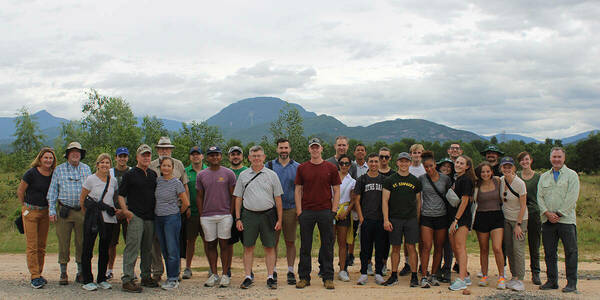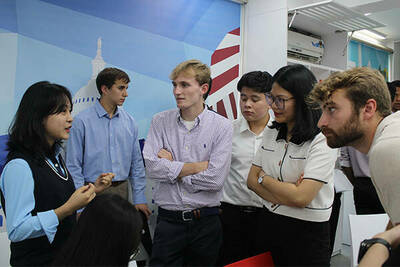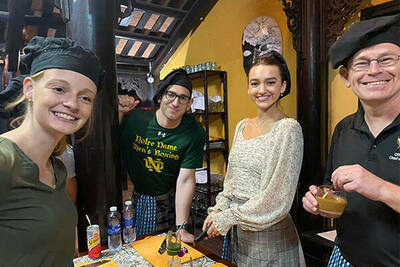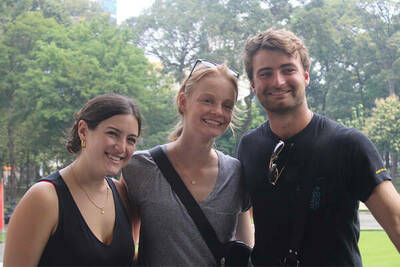
Located in Southeast Asia, Vietnam is known for its mountains and waterways. With a population of over 96 million, it is the world’s 15th most populous country. Vietnam has a rich history dating back over a thousand years, which can be seen in the capital city of Hanoi—founded in 1010.
Vietnam is one of the last countries left in the world controlled by a communist government. The country has had a long history of war, colonization, and political unrest. The U.S. became militarily involved in Vietnam in 1955 following the separation of Vietnam into the North and South. The U.S. supported the anti-communist South Vietnam, while the Soviet Union and China supported the communist North Vietnam, furthering Cold War tensions.
A young man born in Missouri named Jim Webb was one of the roughly 2.7 million U.S. soldiers who fought in the Vietnam War. He was promoted to First Lieutenant and served as a Platoon Commander during his time with the Marie Corps in Vietnam. The Marine would later earn his JD at Georgetown, represent Virginia in the U.S Senate, serve as the 66th Secretary of the Navy, and, in 2020, become a Distinguished Fellow at the Notre Dame International Security Center (NDISC).
This semester, NDISC Undergraduate Fellows had the opportunity to learn about the Vietnam War from Senator Webb’s perspective in a class appropriately titled Webb’s War. The class cumulated in a ten-day trip to Vietnam during Fall Break 2022 to see the locations Senator Webb discussed in class and to learn about Vietnamese culture.
Hanoi

Students first arrived in the capital city of Hanoi. While in the city, students visited several historical and cultural sites. Among these were Hoa Lo prison and the Temple of Literature. Hoa Lo, also known as the Hanoi Hilton or Maison Centrale, is one of the most infamous prisons used by North Vietnam to detain prisoners of war. Part of this infamy is due to the months or years some U.S. soldiers spent detained there, among these soldiers was future-Senator John McCain. The prison is now a museum dedicated to those who spent time there both during the Vietnam War and the political prisoners who were there while Vietnam was under French colonial rule. Among the artifacts at the museum is the exact flight suit McCain wore when he was captured.
Students got a glance of what life was like for students in ancient Vietnam at the Temple of Literature. The temple was built in 1070 by the Emperor of Vietnam as a place for scholars to study the works of Confucius. The Imperial Academy within the temple was also the first university in Vietnam. Students walked the grounds and heard what daily life was like for students as they prepared for examinations.
While in Hanoi, students also met U.S. Ambassador to Vietnam Marc Knapper at the U.S. Embassy. Ambassador Knapper and his team worked alongside the Diplomatic Academy of Vietnam (DAV) to set up a diplomacy simulation that involved both NDISC and DAV students. In the simulation, students from both countries worked together to prepare presentations and get to know one another. Along with furthering the students’ understanding of diplomatic discussions, this simulation was also designed to nurture the relationship between the countries.
Hoi An

Considered the food and cultural capital of Vietnam, Hoi An was the next stop on our students' journey. While there, students visited several historical sites, including a 400-year-old Japanese Covered Bridge that connected the city when it was divided into two districts. Students participated in a cooking class with local chefs to learn some of the cultural dishes from the region. Students also enjoyed a sampling of the various local cuisines during a tour of the city.
The most important day of the trip was the tour of battlefields, airstrip, and war memorials with Senator Webb. Senator Webb described the importance of remembering the soldiers who were lost on both sides of the war while at a memorial for North Vietnamese soldiers. Students walked alongside Senator Webb to the former airstrip where he spent time during the war. There he explained events that happened nearby and how it affected the soldiers there. Before they departed, Rev. William Graham led the group in prayer.
Ho Chi Mihn City

The final stop was in the southern city of Ho Chi Mihn, formerly Saigon. While there, students sat in on a discussion panel between Sen. Webb and Mr. Bui Kien Thanh, a financial and economic expert from Vietnam. This panel gave students a look at the two views that came out of post-War Vietnam and the effects the conflict had on the people.
The Mekong Delta is the "rice bowl” of Vietnam. Students took a boat tour of the Bên Tre River, making stops to learn about the importance of the coconut to the local economy. Local merchants showed how coconut caramel and other coconut-based products are made. Our guide explained the different types of coconuts and how the water coconut plant hid soldiers during the War. After the boat tour, students experienced another local form of transportation: the xe lôi also known as a tuk-tuk or rickshaw. Students saw the scenery from the back of these motorized carts.
Finally, our students toured more of the historical sites within Ho Chi Mihn City, including the War Remnants Museum, Reunification Palace, and former U.S. Embassy B, where many famous photos were taken during the 1975 evacuation. All three of these sites gave students an additional perspective on the War and its aftermath. The War Remnants Museum showcased the weapons and vehicles used during the War along with the horrors of war itself. The Reunification Palace showed the end of the War and the peace talks/treaties that reunited North and South Vietnam. The former U.S. Embassy B was an interesting juxtaposition between the modern city and the history of the location. Today, the embassy is situated among stores and office buildings with little to identify its history.
The Notre Dame International Security Center offers its students the opportunity to visit and experience the most important places in the global community, both stateside and abroad. Want to find out where NDISC’s next adventure takes you? Get in touch with us today!